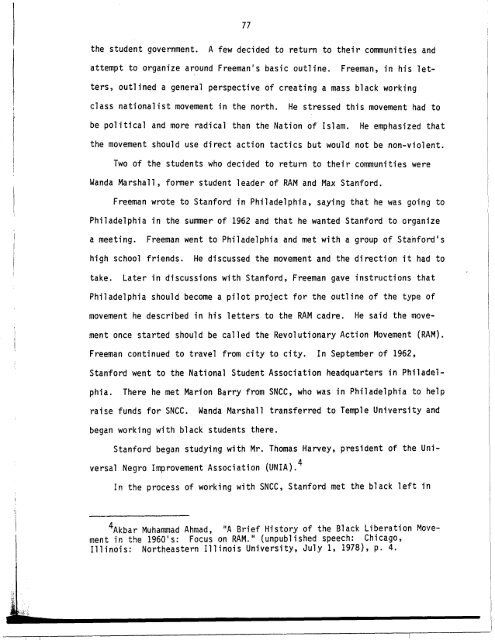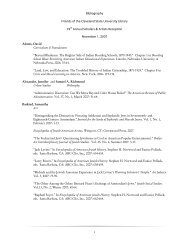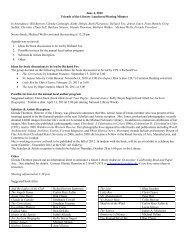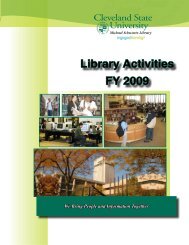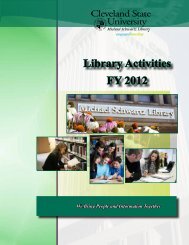revolutionary action movement (ram) - Michael Schwartz Library
revolutionary action movement (ram) - Michael Schwartz Library
revolutionary action movement (ram) - Michael Schwartz Library
Create successful ePaper yourself
Turn your PDF publications into a flip-book with our unique Google optimized e-Paper software.
77<br />
the student government . A few decided to return to their communities and<br />
attempt to organize around Freeman's basic outline . Freeman, in his letters,<br />
outlined a general perspective of creating a mass black working<br />
class nationalist <strong>movement</strong> in the north . He stressed this <strong>movement</strong> had to<br />
be political and more radical than the Nation of Islam . He emphasized that<br />
the <strong>movement</strong> should use direct <strong>action</strong> tactics but would not be non-violent .<br />
Two of the students who decided to return to their communities were<br />
Wanda Marshall, former student leader of RAM and Max Stanford .<br />
Freeman wrote to Stanford in Philadelphia, saying that he was going to<br />
Philadelphia in the<br />
summer of 1962 and that he wanted Stanford to organize<br />
a meeting . Freeman went to Philadelphia and met with a group of Stanford's<br />
high school friends . He discussed the <strong>movement</strong> and the direction it had to<br />
take .<br />
Later in discussions with Stanford, Freeman gave instructions that<br />
Philadelphia should become a pilot project for the outline of the type of<br />
<strong>movement</strong> he described in his letters to the RAM cadre . He said the <strong>movement</strong><br />
once started should be called the Revolutionary Action Movement (RAM) .<br />
Freeman continued to travel from city to city . In September of 1962,<br />
Stanford went to the National Student Association headquarters in Philadelphia<br />
. There he met Marion Barry from SNCC, who was in Philadelphia to help<br />
raise funds for SNCC . Wanda Marshall transferred to Temple University and<br />
began working with black students there .<br />
Stanford began studying with Mr .<br />
Thomas Harvey, president of the Universal<br />
Negro Improvement Association (UNIA) . 4<br />
In the<br />
process of working with SNCC, Stanford met the black left in<br />
4Akbar Muhammad Ahmad, "A Brief History of the Black Liberation Movement<br />
in the 1960's : Focus on RAM ." (unpublished speech : Chicago,<br />
Illinois : Northeastern Illinois University, July 1, 1978), p . 4 .


